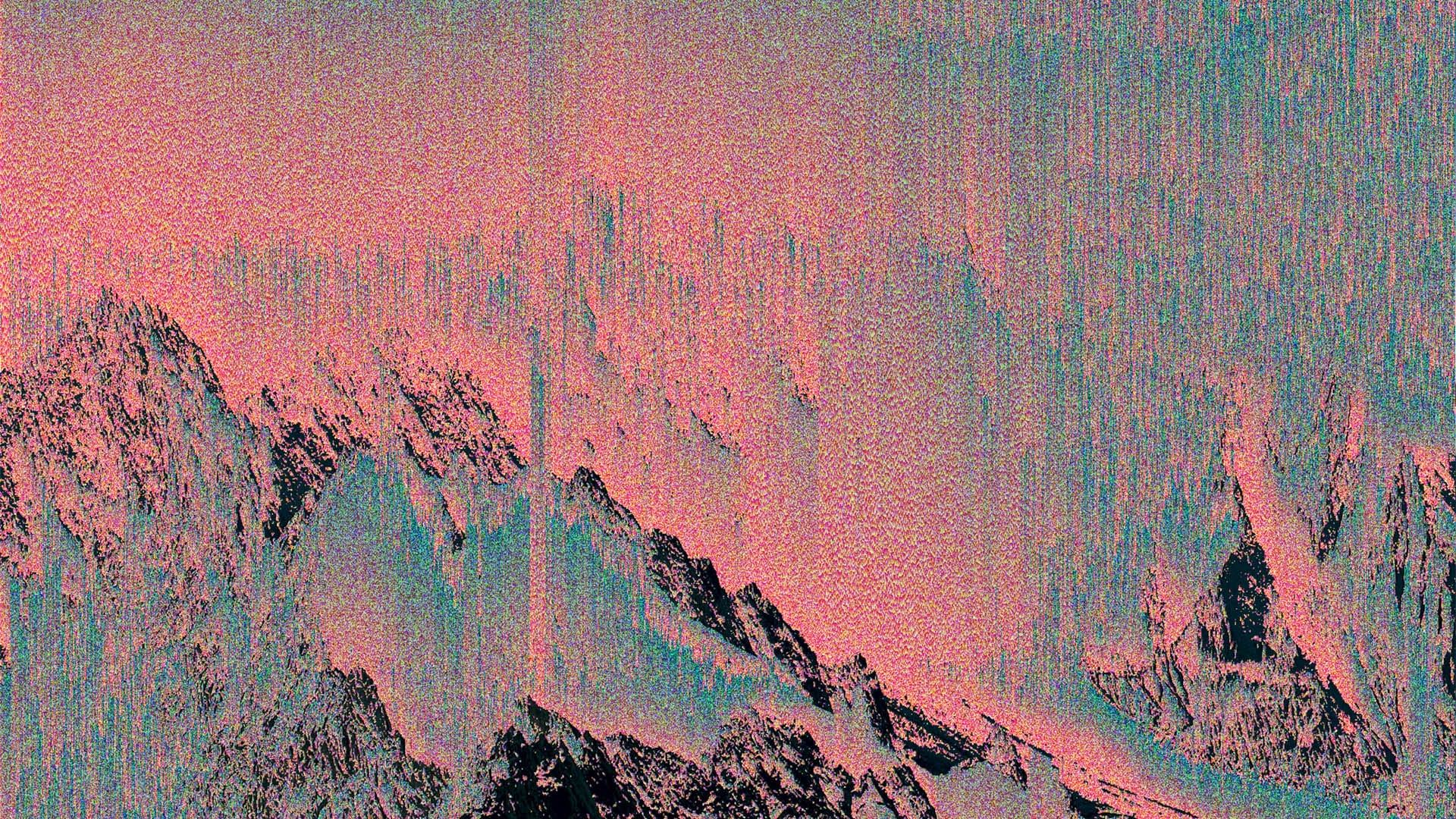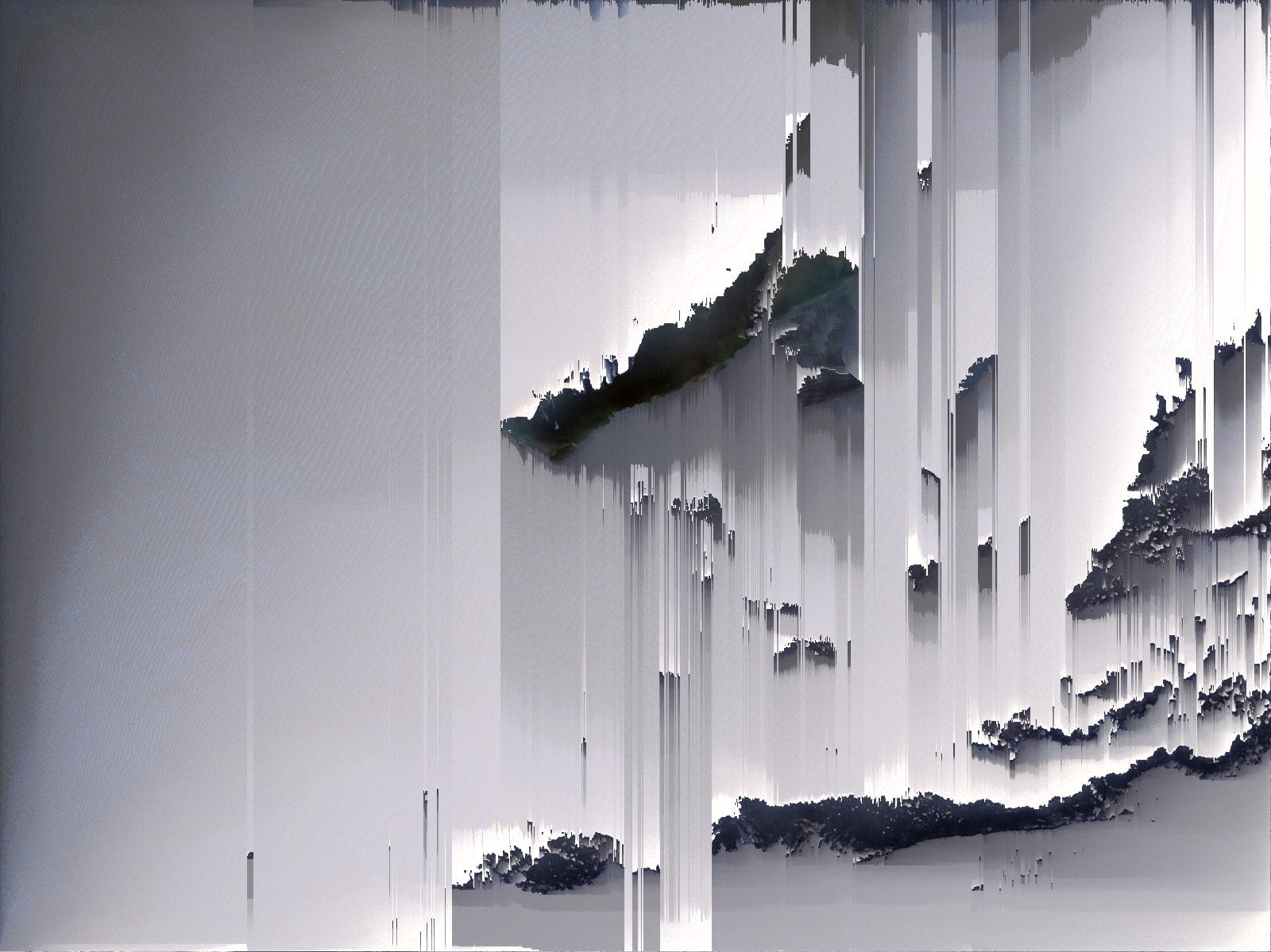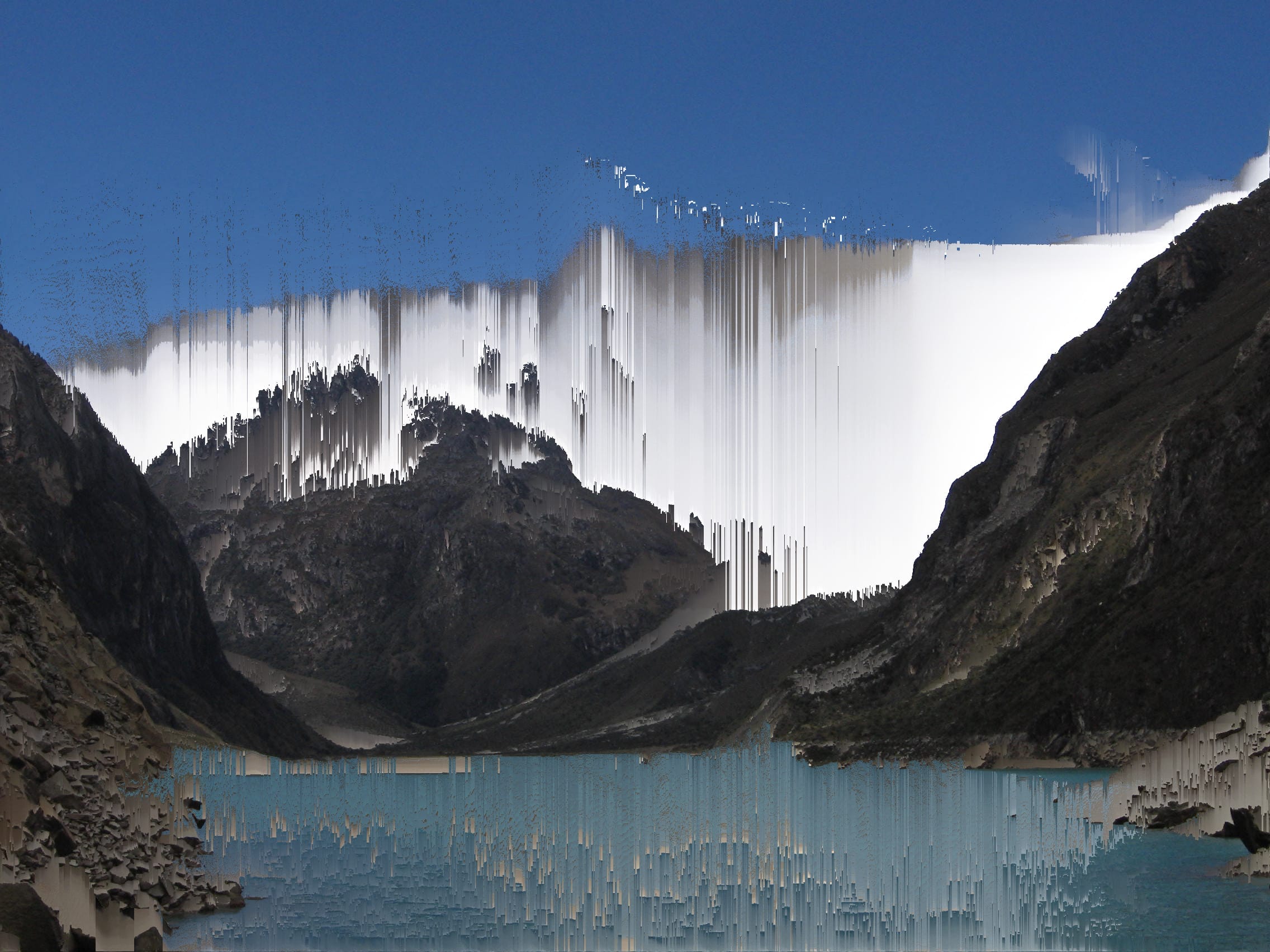
Kim Asendorf: From Pixel to Paradigm
A pioneer in the field of digital aesthetics, Kim Asendorf is a German visual artist whose work is characterized by a fusion of conceptual strategies, generative systems, and a deep engagement with the digital medium.
Among his most iconic contributions, his exploration into pixel sorting—a technique that has since become a hallmark in the development of digital art—reveals a deeper curiosity about the possibilities within pixels themselves.
Nevertheless, the true value of his work lies not just in the methods he adopts, but rather in the questions he prompts about the nature of art and its interaction with technology.

Early Encodings: The Roots of Kim Asendorf’s Digital Exploration
The genesis of Kim Asendorf’s artistic path can be traced back to the early, exciting digital developments that defined the 1980s and 1990s. It was a time when the worlds within the screens of Nintendo consoles and the keys of Commodore 64 and Pentium 286 computers were not just gateways to new, yet unknown digital dimensions, but also the cradle of a new aesthetic sensibility. The pixelated and command-line interfaces of these early computing experiences cultivated in Kim Asendorf an appreciation for digital abstraction—a visual language bound to become a hallmark of his artistic style.
The limitations of early digital graphics, far from being a constraint, offered a playground for pure creativity and experimentation. It was here, among the blocky graphics and beep-filled soundscapes, that Asendorf began to see the potential for forms of art that could transcend traditional mediums and embrace the digital as not just a tool, but as a medium in its own right.
Later, he would transform this early fascination with digital possibilities into a formal artistic pursuit during his studies at Kunsthochschule Kassel, where his coding skills transcended their utilitarian origins to become his primary means of artistic expression. The academic program in visual communication and new media provided him with the perfect setting for refining his skills and broadening his conceptual horizons; during this time, coding became more than just a method, it became a language to communicate complex ideas and emotions, bridging the traditional gap between artist and audience.
To date his work has been shown at festivals and institutions including Transmediale, ZKM Karlsruhe, Edith-Russ-Haus für Medienkunst, NCCA Yekaterinburg, Eyebeam, NIMK, LEAP or the Overlapping Biennial Bucharest and at galleries and fairs like Unpainted (Munich), Moving Image Contemporary Art Fair (London), Creation Gallery G8 (Tokyo), Carroll / Fletcher (London), Office Impart (Berlin), XPO Gallery (Paris), The Photographers’ Gallery (London) and has received honorary mentions and sparked discussions on major blogs, media and art magazines and television.
Conceptual Foundations: Shaping Asendorf’s Digital Dialogue
From the foundational experiences that shaped Kim Asendorf’s early engagement with digital mediums, it is fundamental to highlight the conceptual foundations that inform his work today.
Although Kim Asendorf’s chosen mediums are technically complex, his conceptual framework transcends these complexities. In contrast, his aesthetic philosophy is one of digital expressionism, where technology is not just a tool but a partner in the artistic process.
His art is a dialogue, a series of questions posed about the nature of perception, the authenticity of digital experiences, and the possibilities of generative systems to create meaning. As part of a broader aesthetic inquiry, this approach considers the digital canvas as an infinite space for exploration, expression, and experimentation. Each work, whether it is an abstract animation, a digital sculpture, or an interactive installation, is a manifestation of his belief in the transformative power of digital art — and how it can be experienced in new, meaningful ways.
Structured Chaos: The Evolution of Asendorf’s Pixel Sorting
Asendorf’s artistic style is deeply rooted in his engagement with pixels and generative systems, where he seeks to uncover new visual forms through conceptual rules and algorithmic processes. In light of this, one of his most significant contributions to digital art is the creation and dissemination of pixel sorting, a technique introduced over a decade ago and made open source in 2012 that has since become synonymous with the aesthetic exploration of digital imagery.
Since its introduction, Asendorf’s pixel sorting has catalyzed a transformative movement within the digital art community, fostering a culture of innovation and adaptation among tech-savvy creators and visual artists alike. This communal exploration and iteration of the technique have given rise to a distinct visual style that, while often associated with glitch art, is distinguished by its systematic approach to reconfiguring pixel data, the final composition, marked by its signature streaked visuals.
As opposed to traditional notions of digital mishaps as purely unintentional, Asendorf’s methodology strategically manipulates digital components. Through the algorithmic sorting of pixels by luminosity, Asendorf engineers a deliberate orchestration of digital elements, marrying precision with the unpredictable. In contrast to digital randomness, this method demonstrates masterful mastery over chaos, resulting in works that are both aesthetically captivating and engaging because of the balance between structure and spontaneity.
The resilience and popularity of pixel sorting within the artistic community highlight a compelling contradiction within glitch art itself: the deliberate creation from the supposedly accidental. Asendorf’s technique reframes the narrative around digital glitches, positioning them not as mere errors but as opportunities for artistic exploration — a reconceptualization not only expands the toolkit of digital artists but also prompts a deeper inquiry into the nature of creativity and the potential of digital mediums to challenge our aesthetic conventions.
Structured Chaos: The Evolution of Asendorf’s Pixel Sorting
Asendorf’s artistic style is deeply rooted in his engagement with pixels and generative systems, where he seeks to uncover new visual forms through conceptual rules and algorithmic processes. In light of this, one of his most significant contributions to digital art is the creation and dissemination of pixel sorting, a technique introduced over a decade ago and made open source in 2012 that has since become synonymous with the aesthetic exploration of digital imagery.
Since its introduction, Asendorf’s pixel sorting has catalyzed a transformative movement within the digital art community, fostering a culture of innovation and adaptation among tech-savvy creators and visual artists alike. This communal exploration and iteration of the technique have given rise to a distinct visual style that, while often associated with glitch art, is distinguished by its systematic approach to reconfiguring pixel data, the final composition, marked by its signature streaked visuals.
As opposed to traditional notions of digital mishaps as purely unintentional, Asendorf’s methodology strategically manipulates digital components. Through the algorithmic sorting of pixels by luminosity, Asendorf engineers a deliberate orchestration of digital elements, marrying precision with the unpredictable. In contrast to digital randomness, this method demonstrates masterful mastery over chaos, resulting in works that are both aesthetically captivating and engaging because of the balance between structure and spontaneity.
The resilience and popularity of pixel sorting within the artistic community highlight a compelling contradiction within glitch art itself: the deliberate creation from the supposedly accidental. Asendorf’s technique reframes the narrative around digital glitches, positioning them not as mere errors but as opportunities for artistic exploration — a reconceptualization not only expands the toolkit of digital artists but also prompts a deeper inquiry into the nature of creativity and the potential of digital mediums to challenge our aesthetic conventions.

The Decentralization of Aesthetics: Asendorf’s Exploration of Art and Blockchain
Within the scope of Kim Asendorf’s artistic practice, his engagement with digital mediums—specifically through the internet and blockchain—unveils a forward-thinking approach to art’s distribution, ownership, and the dichotomy between ephemerality and permanence.
In keeping with this vision, he focuses on blockchain technology as a means of exploring digital art’s essence within a decentralized landscape, not solely from a technical standpoint, but most importantly from a perspective of its permanence and existence.
Through the use of blockchain in his works, Asendorf challenges established norms of the art market, infusing his work with a level of interaction that introduces discussions around authenticity, scarcity, and digital works as unique assets; an exploration which is pivotal in addressing digital art’s reproducibility and its quest for tangible significance, as it positions blockchain as a mediator in the dialogue on digital permanence.
At the same time, Asendorf’s art is marked by a conscious emphasis on full-screen aesthetics and the potential of interactivity to transform viewer experiences. His artworks transcend mere digital display, inviting audiences to engage directly with the algorithmic foundation of each piece. This aspect of his work underscores a departure from passive viewing, fostering a dynamic environment where art evolves in response to viewer interaction.
Asendorf views his art as a form of communication, a language through which he expresses spontaneous visions and ideas without necessarily conveying a grand message. This expressive approach leads to experimental and conceptual works that resonate with viewers on multiple levels, encouraging them to develop their very own personal relationship with his art.
The Exhibit as An Interface: Solo & Group Installations
Among the manifestations of Asendorf’s rigorous inquiry into digital media’s potential to augment and redefine human perception, there are his installations, which offer both simple and complex worlds, in which the digital and conceptual are intertwined to provoke viewers to rethink their relationship to technology and digital media.
Among them are groundbreaking projects like “Pixel Matter”, “COLORS OF NOISE”, “Cargo” and the recent “AGH1” project, each of which synthesizes distinct yet interconnected conceptual threads into a coherent whole.
“Pixel Matter”, a collaborative effort between Kim Asendorf and Olia Lialina, represented a pivotal exploration into the essence of digital visual culture, presented at Roehrs & Boetsch, Curuna Ardez in 2022. The exhibition served as a profound inquiry into the pixel, the most fundamental element of digital imagery, positioning it as both the medium through which digital art is created and a significant message in itself. By dissecting the pixel’s role in digital aesthetics, Asendorf and Lialina challenged and expanded digital media’s capability to convey complex ideas.
“COLORS OF NOISE” epitomized Asendorf’s fascination with the potential for digital algorithms to transform abstract data into immersive, multisensory experiences. This installation, by translating the spectral characteristics of noise into visual patterns —such as white, pink, and brown noise— acts as a bridge between the auditory and the visual, challenging conventional boundaries of sensory engagement. In a way, it is a direct reflection of Asendorf’s philosophy that art should not just be seen but experienced, inviting the viewer to consider the omnipresent, yet often overlooked, digital noise that shapes our contemporary existence.
“Cargo”, on the other hand, presents a different but equally fascinating exploration of abstract visual systems: through patterns, structures, and movements that evoke the dynamics of logistics and transport, “Cargo” reflects on the constant flow and storage of goods in our globalized world. Here, viewers are challenged to be patient and let the artwork unfold over time — a unique interpretation of abstract art, this piece emphasizes the importance of personal perception in experiencing art and emphasizes the unpredictability and complexity of abstract art.
Among Kim Asendorf’s most recent installations, is AGH1, a collaborative project with Andreas Gysin and Leander Herzog. A collaboration, which under the collective name AGH, aims to interrogate the boundaries and possibilities of digital media through innovative, code-based artworks that challenge traditional notions of art and its interaction with technology.
AGH1, the inaugural event showcasing works from Asendorf, Gysin, and Herzog at Funkhaus Berlin (December 2023) underscored the trio’s pioneering approach to digital expression: each artist brought a unique perspective to the table, with Asendorf’s contribution, “Alternate,” exemplifying the sophisticated integration of algorithmic processes and aesthetic inquiry. This work, entirely on-chain, highlights Asendorf’s pursuit of digital art’s permanence and adaptability, mirroring his broader artistic approach that seeks to explore the interplay between the ephemeral nature of digital media and the enduring qualities of traditional art forms.
The dialogue within AGH, gravitates around the potential of real-time, code-based art to redefine our engagement with the digital aesthetic. An exploration which is not just a technical undertaking, but a philosophical one, questioning the static nature of traditional artworks in the face of the dynamic, interactive potential offered by digital platforms. In this way, the collaborative nature of AGH emphasizes the importance of adaptability and responsiveness in art, allowing for creations that can exist across various devices and scales, ultimately reimagining the relationship between art, its creator, and its audience.
As part of the AGH collective’s first Dubai premiere, AGH1 will run from February 16th to March 24th, 2024 at Foundry Downtown, presented by Fakewhale and curated by Giuseppe Moscatello.
Sight, Sound, and Syntax: The Interconnected Art of Kim Asendorf
Kim Asendorf, in his methodical dissection and reconfiguration of the pixel, engages in a deeper dialogue about the granularity of digital experiences — each of his contributions, singular investigations into the interplay of sound, sight, and algorithm.
Far from being mere replications of the physical world, Asendorf’s creations reveal a unique domain where form, function, and concept coalesce in unprecedented ways, becoming a sophisticated commentary on the digital condition itself.
Through this innovative approach, Asendorf invites his audience to see the digital not just as a backdrop to everyday life but rather as an integral part of our daily experiences. His art is a reminder that in a digitally saturated world, there are still new territories to explore, new connections to make, and new ways to see the familiar with fresh, engaged eyes.
fakewhale
Founded in 2021, Fakewhale advocates the digital art market's evolution. Viewing NFT technology as a container for art, and leveraging the expansive scope of digital culture, Fakewhale strives to shape a new ecosystem in which art and technology become the starting point, rather than the final destination.
You may also like
FAKEWHALE in conversation with Jan Robert Leegte
On the occasion of the upcoming exclusive Fakewhale-curated release Walled Garden, launching June 5
Fakewhale Solo Series presents Persistence of Form by Gary Edward Blum
On Wednesday, May 22nd, Fakewhale proudly presents “Persistence of Form”, a Fakewhale Solo Serie
FW Spotlight: Top Submissions of January
Perception is an unstable process, always hovering between what we believe to be real and what slips




